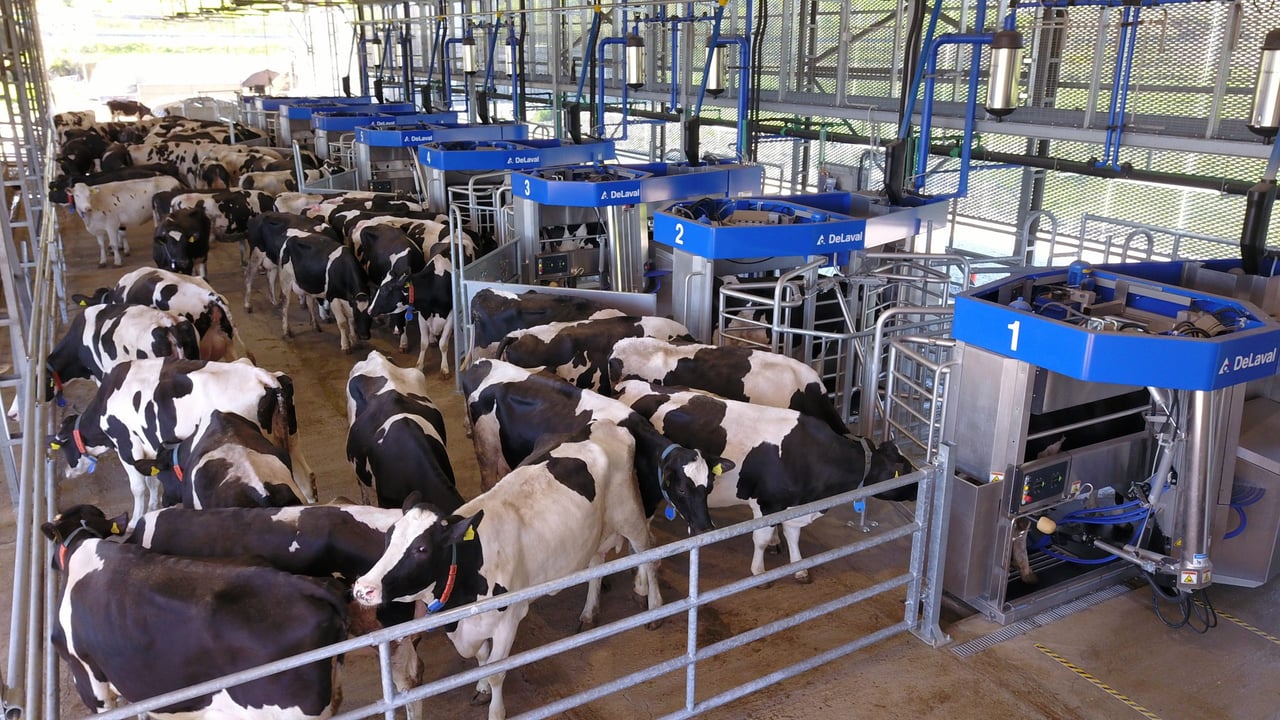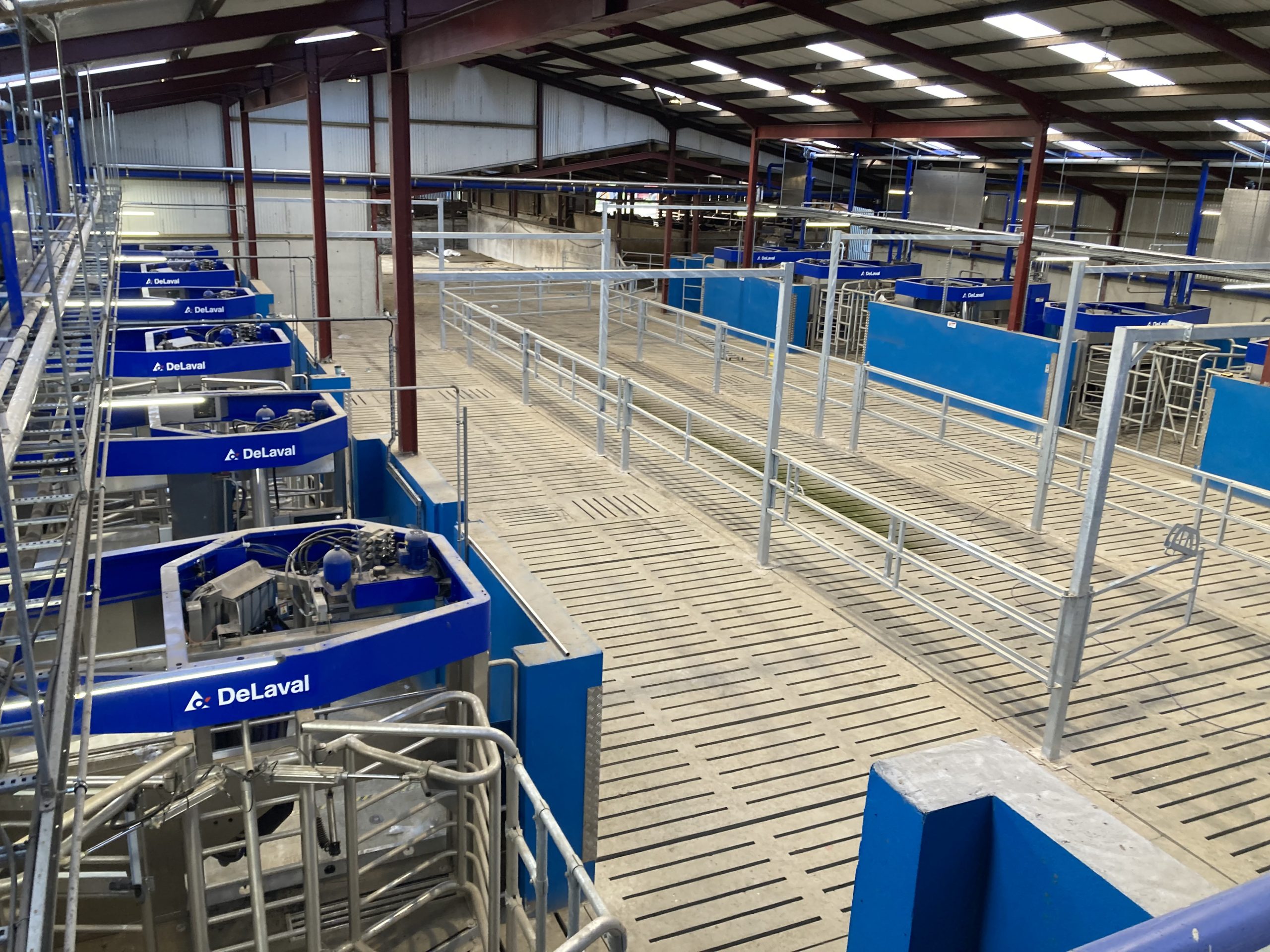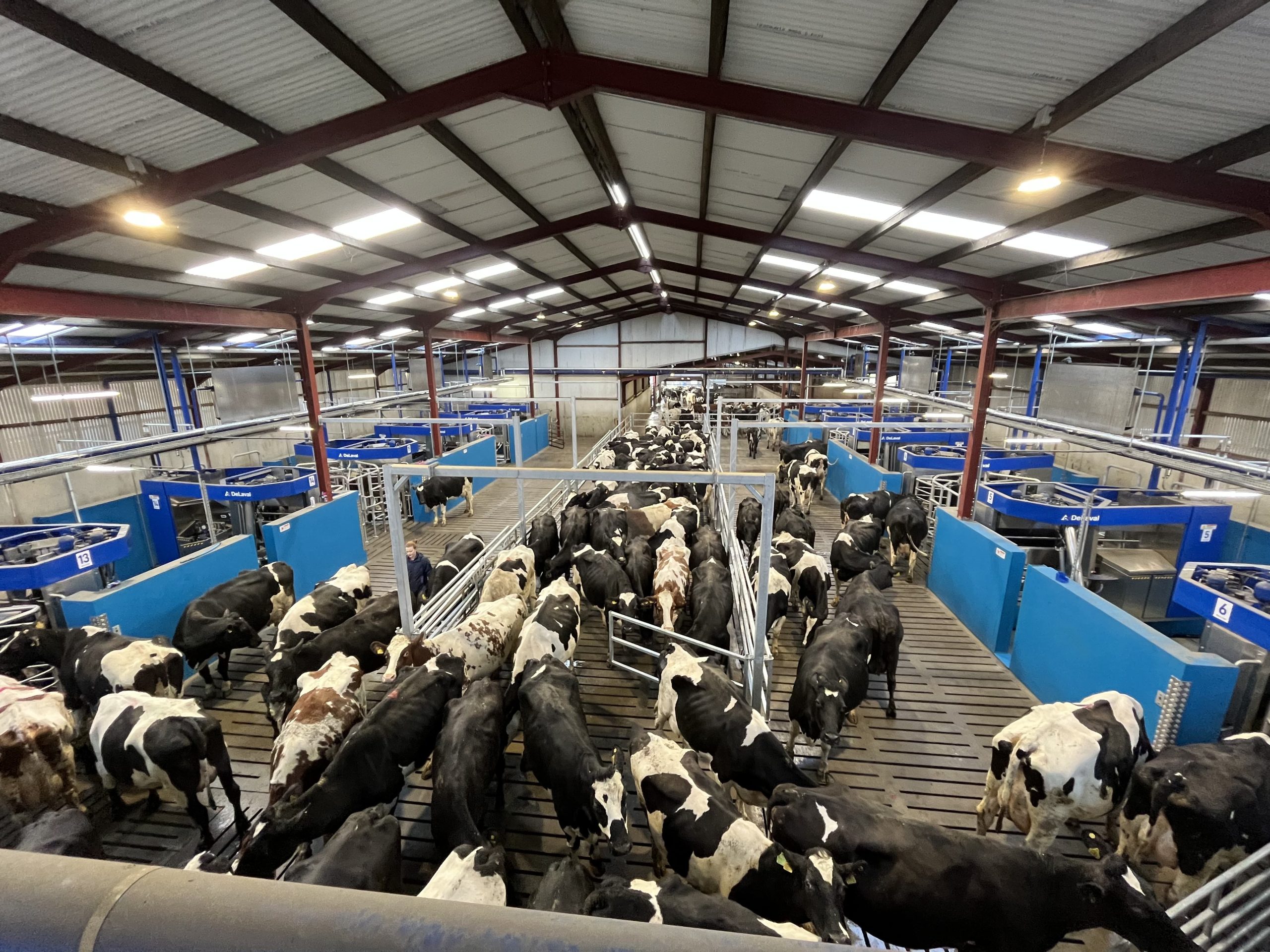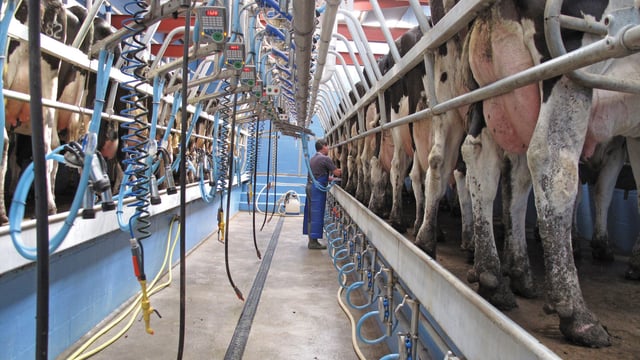Sponsored Article

Sponsored Article
Everything you need to know about 'batch milking'
Sponsored Article

Batch milking is a concept that was launched by DeLaval in the past few years, which helps to cut out a lot of the hard graft of milking your herd.
Batch milking allows for milking a large number of cows, on a regular routine, and with automation of the milking process, it can cut out a lot of work for farmers.
A relatively new concept, we provide detail on the ins-and-outs of batch milking below.
DeLaval launched the concept of batch milking in 2021 and there are now 150 VMS robots in a batch setup globally, with herd sizes ranging in size from 250 to 2,000 cows.
Batch milking requires only one staff member to milk a herd of up to 2,000, which makes it attractive to markets where recruitment is difficult and skilled wages are high.
Batch milking uses a bank of robots to milk cows in groups at scheduled times.
By automating the milking process, it reduces the need for human involvement while still allowing farmers to maintain control over their milking and feeding schedules, preserving the regularity of traditional milking routines.
The system, therefore, combines traditional milking patterns with the automation of robot technology.
Robots handle tasks such as attaching the milking cups, monitoring cow health, and collecting essential data, including information about the cow’s milk yield and milk quality.
In a free or guided access robot farm arrangement, cows choose when to be milked which has provided excellent yield results for small- to medium-sized herds.
However, batch milking operates on a set schedule which makes it easier to milk cows at regular times and provides larger farms with the option to milk two, three, or even four times a day with minimal labour.
Cows are organised into groups based on factors such as lactation stage, production levels, or feeding regimes.
These groups are then taken to robots arranged in a layout similar to a parallel parlour, which includes a central holding area.
Each group of cows is then milked simultaneously by the robots.
After milking, the cows exit through selection gates that direct them to the appropriate area, such as a herd health sorting area, a holding pen, their original pen, or the next grazing area.
The equipment is thoroughly cleaned and sanitised after each batch to maintain high milk quality. The process then repeats with the next group of cows.
Making the switch to batch milking has been an easy transition for farms looking to reduce labour dependency and increase yield. The herd maintains the same total mixed ration (TMR) and feeding routine.
If converting from parlour or rotary milking, the cows will see little difference to the milking pattern, but the farm will be able to save time and labour.
Batch milking is easily scalable and, unlike a parlour, the robots are being continually updated with new technology to provide more information to the farm.
This data includes milking time and yield but can also incorporate cell count and progesterone testing to help improve fertility.
The number of robots depends on cow numbers, how many milkings of the batches are needed and the desired time each milking session should take. Cow numbers/robot have a part to play but the length of the milking time determines this too. Less time milking wanted = more robots needed.
This ratio is a guideline, and some farms will milk more cows, at a slower rate, while others may choose more robots to speed up milking.
Almost any farm, but especially farms with herds of 300 or more, can operate a batch milking dairy, which is why the concept is proving very popular for larger farms and farms looking to expand.
Dairy farms are struggling to find skilled, dependable labour, and this is where batch milking can help take the pressure away.
This is especially true for farms looking to expand because batch milking can be easily scaled up without the need for additional labour.
In this type of milking system cows wait less than with a traditional parlour or rotary. This has helped farms that have implemented batch milking to reduce milking times, improve foot health and cow comfort.
The robots use DeLaval’s four quarter milking method, which is both gentle and precise. It helps to minimise overmilking and reduces stress, which means cows are calm when visiting the robot.
This has the knock-on benefit of improving milk yield and quality to boost farm productivity.
Unlike robot systems where the cows choose when to be milked, a batch milking system moves all the cows out of cubicles to enable bedding and forage to be replenished and slurry to be scraped away.
There is also no need for the 24/7 backup that robot farms have to help deal with breakdowns, and problem cows do not need to be fetched individually to the robot, the whole herd moves together.
Sponsored Article








